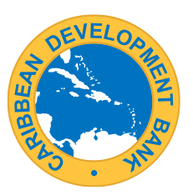

|
|
 Caribbean nations are looking to attract as much as $30 billion of investment to expand the clean power sector and cut reliance on fossil fuels, according to the Caribbean Development Bank. “Most of our countries are highly dependent on fossil fuels for power generation,” Caribbean Development Bank president Warren Smith said in an interview to Bloomberg News in London. “This vulnerability to volatile oil prices has contributed hugely to the competitiveness challenges of Caribbean industries.” About $20 billion is needed in the next five to 10 years to replace power plants and upgrade distribution and transmission, he said. There is potential to replace 4,750MW of fossil-fuel generation with renewables through 2019, Smith said. The bank is talking with regional utilities interested in building clean energy plants to feed power into the grid. Smith also noted that the region is starting from a very low level of renewables deployment and needs policy support from governments if it is to realize this clean energy vision. For example, only two countries - Jamaica and Barbados - currently allow households and businesses generating their own power through technologies such as solar panels to sell it back to the grid, leading to a policy gap that acts as a barrier to wider investment. "The regulatory environment is a prerequisite for a major uptake of renewables," Smith says. "If you want to move to a situation where you can attract investment in renewable then you have to have the ability to sell to the grid. Right now, we are behind the eight-ball on that. But we are working with the countries to try to ensure that legislation is put in place." Sources for this post: Bloomberg New Energy Finance Week in Review; Business Green.
 The Overseas Private Investment Corp. (OPIC) approved a loan guarantee of up to $230 million to support construction of Luz del Norte, a 141-megawatt solar plant in Chile, which is being built by Arizona-based First Solar. Since 2013, OPIC has approved $900 million in loan guarantees for six renewable energy projects in Chile, making the U.S. the largest lender for renewable energy in the country, according to The Hill. 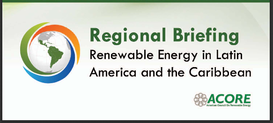 ACORE's white paper, “Renewable Energy in Latin America and the Caribbean,” analyzes issues and opportunities in the Latin American and the Caribbean (LAC) region's renewable energy markets. New sources of renewable energy funding are increasingly available, according to the White Paper. Sources include local and multinational development banks such as the Inter‐American Development Bank (IDB), Brazilian Development Bank (BNDES), and Overseas Private Investment Corporation (OPIC), as well as foreign and local private investors. These positive signals indicate that the LAC region will continue to be an important location for renewable energy investment and deployment in the years to come. Report: 200 Actions President Obama Can Take to Accelerate U.S. Transition to Clean Energy Economy1/21/2014
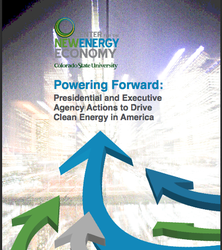 A new report from the Center for the New Energy Economy recommends more than 200 actions that President Obama can take to accelerate America’s transition to a clean energy economy – actions the authors believe can be implemented within the President's existing executive branch power. The recommendations were developed by more than 100 energy industry experts and thought leaders, including chief executive officers, chief financial officers and other top executives from industry, academia, research institutions, NGOs and state and local governments. The report's five areas of focus are: 1. Doubling energy productivity 2. Financing renewable energy 3. Producing natural gas responsibly 4. Developing alternative fuels and vehicles, and 5. Enabling electric & gas utilities adapt to the new realities of the 21st century Chile: Renewables Boom Continues with $320M Investment in 161 MW of New Solar and Wind Capacity12/3/2013
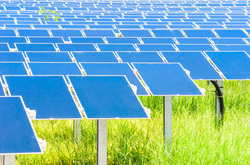 Enel Green Power, a unit of Italy’s biggest power utility, will build two solar plants and a wind farm in Chile with total capacity of 161 MW, according to Bloomberg. The projects will cost about $320 million and are expected to begin operations by the first half of 2015. Power will be sold at a rate of $128 a megawatt-hour, according to a statement from the company. Enel is currently constructing Chile’s largest solar farm in the northern Atacama desert. The “Diego de Almagro” plant will have a total installed capacity of 36 MW, according to Enel.  SolEnergy Farms, together with Perfect Energy and Solar Horizon, will invest $150m in solar energy, with the aim of producing 60 MW in El Salvador, according to Power Engineering International. Initially, $35m will be invested in a 10 MW solar photovoltaic (PV) plant in the municipality of Tecoluca, in the central department of San Vicente. Sol Energy also indicated that it was considering investing an additional $40m in a second phase to produce and sell 40 MW to AES, the private utility. 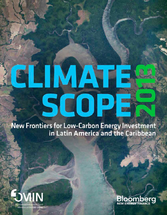 The countries of Latin America and the Caribbean (LAC) are attracting more clean energy investment as governments strengthen policy support and local supply chains expand, according to Climatescope 2013, a new report from the Multilateral Investment Fund (MIF) and Bloomberg New Energy Finance (BNEF). The LAC region captured 6% of the total $268.7 billion invested worldwide in clean energy in 2012, up from 5.7% in 2011. (For purposes of the Climatescope analysis, clean energy is defined as wind, solar, biomass, small hydro, geothermal and other renewable power generation, and biofuels.) “The rapidly falling costs of clean technologies such as solar and wind power combined with an improved investment climate means that clean energy generation in the region is now truly affordable,” said Nancy Lee, General Manager of the MIF. The Global Cleantech 100 List is a list of the top 100 private companies in clean technology. Collated by combining proprietary Cleantech Group research data, with over 9,000 nominations and specific input from an expert panel, these companies represent the most innovative and promising ideas in cleantech—the companies that are most likely to make the most significant market impact over the next 5-10 years.
A total of 18 countries are represented on this year’s list year (a record), with the first entrant from Latin America. 61% of the companies on the list came from the North America region (with 56 companies from the United States). 32 of the companies are from the Europe & Israel region, six from Asia Pacific and, for the first time, a company from South America. Pure Biofuels de Perú specialises in liquid fuels storage, distribution, marketing, and biodiesel production in Peru. The concept of cleantech embraces a diverse range of products, services, and processes across industry verticals that are inherently designed to (a) Provide superior performance at lower costs, (b) Greatly reduce or eliminate negative ecological impact, and (c) Improve the productive and responsible use of natural resources. Report Ranks 40 Countries on the Attractiveness of Renewable Energy Investment and Deployment6/3/2013
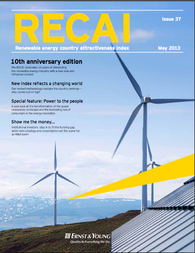 The latest Renewable Energy Country Attractiveness Index released by Ernst & Young ranks 40 countries on the attractiveness of their renewable energy investment and deployment opportunities, based on a number of macro, energy market and technology-specific indicators. As of May 2013, six countries in the Americas were included in the index (rank in parentheses): US (1), Canada (7), Brazil (15), Chile (18), Peru (26), and Mexico (29). The report highlights Chile as "South America's rising star" due to "perfect conditions" for renewable energy deployment: "lack of oil reserves, unreliable gas imports, high electricity prices, surging energy demand driven by the mining sector, and power shortages arising from a traditional overreliance on hydropower."  Clean energy investment in non-Brazil Latin America totaled $4.7 billion in 2012, a 127% increase from 2011, according to Bloomberg New Energy Finance, while total clean energy investment in Latin America, including Brazil, reached $9.7 billion. With the dramatic growth in investment in non-Brazil Latin America, the region was a leader in a year when global clean energy investment declined 11%. (More on global trends here.) The most growth occurred in Mexico ($1.9 billion, up 595%), Chile ($1 billion, up 313%), Uruguay ($105 million, up 285%), and Peru ($643 million, up 176%). The investment totals include investments in energy generation technologies and biofuels. The investment growth in non-Brazil Latin America was "driven by increased activity by the Inter-American Development Bank,” said Maria Gabriela da Rocha Oliveira, Head of Latin America Research and Analysis at BNEF, in an ACORE press release. “Additionally, European players, both project developers and manufacturers, have become more active in the region given grim conditions at home.” Brazil, Latin America’s largest economy, attracted the most capital in the region, $5.17 billion, but this figure represents a significant decline from the $7.8 billion invested in Brazil in 2011. This decline is reportedly due in part to the funding disbursement cycles of the development banks that provide the majority of asset finance in the region. |
Categories
All
Archives
January 2025
Blogroll
|
|
© 2013 - 2025 InterAmerican Clean Energy Institute, a project of Earth Ways Foundation Inc, a 501(c)3 nonprofit organization.
|
Web Hosting by iPage
|

 RSS Feed
RSS Feed